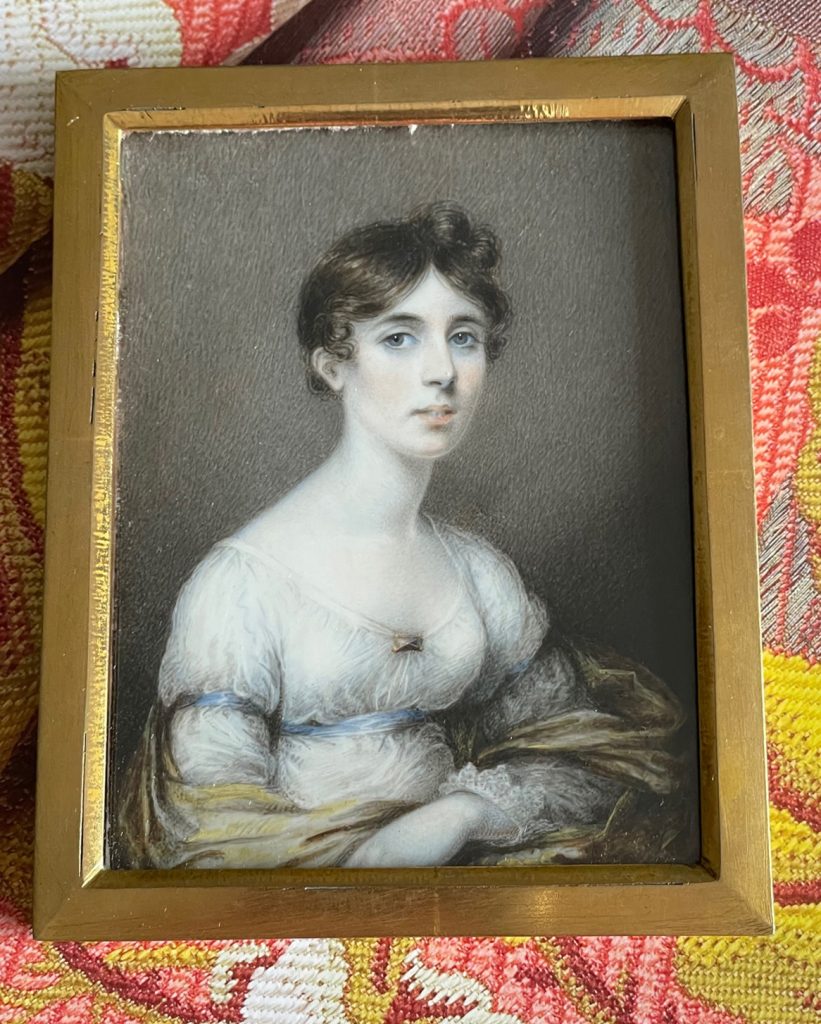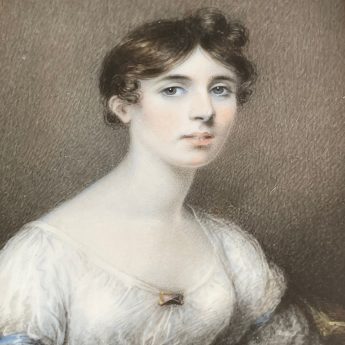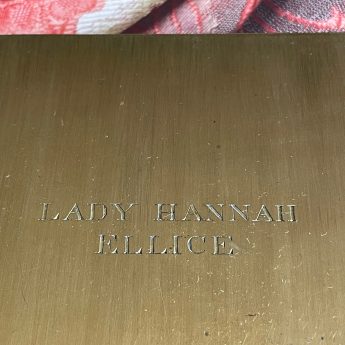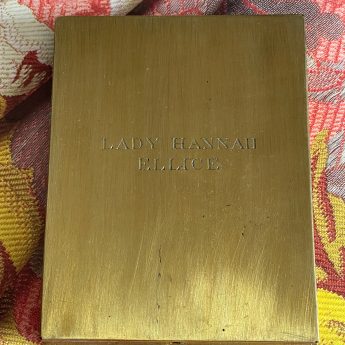
Tea, Lord Byron & Canadian Fur
Portrait miniatures, silhouettes, portraits & an omnium-gatherum of historical interest & character.
Enquiries and orders
Tea, Lord Byron & Canadian Fur
Lady Hannah Althea
£1,100
This is the story of Lady Hannah. The youngest of seven, Hannah Althea was born in Howick in April 1784 to General Charles ‘No Flint’ Grey, 1st Earl Grey and his wife Elizabeth Petry Grey. Earl Grey tea was supposedly named after Hannah’s brother who became the 2nd Earl Grey and was the British Prime Minister in the 1830s.
In 1807, the year that this portrait was likely to have been painted, Lady Hannah married Royal Navy officer George Edmond Byron Bettesworth, first cousin to the poet Lord Byron who wrote of him –
I am going to sea for four or five months with my cousin, Captain Bettesworth, who commands the Tartar, the finest frigate in the navy … We are going probably to the Mediterranean or to the West Indies, or to the devil; and if there is a possibility of taking me to the latter, Bettesworth will do it, for he has received four-and-twenty wounds in different places, and at this moment possesses a letter from the late Lord Nelson stating that Bettesworth is the only officer in the navy who had more wounds than himself.
Alas, the planned voyage did not take place as the fearless Bettesworth received a fatal wound at the Battle of Alvøen in 1808.
Widowed so soon and so young, Hannah did not observe a long period of mourning as the following year she married Edward ‘The Bear’ Ellice, a merchant and politician who earned his nickname ‘The Bear’ from his interest in the Canadian fur trade. The couple had one son who, like his father before him, became an elected MP. Lady Hannah died at their home in Mayfair in July 1832, aged 47.
Hannah Althea is shown here in a beautifully rendered white empire-line dress trimmed with blue satin ribbon on the sleeves and waist and with ‘Van Dyke’ styled lace cuffs. A small brooch sits on her corsage and a gold shawl is draped over her arms.
Although unsigned, the portrait can be stylistically attributed to the hand of John Cox Dillman Engleheart, the nephew and pupil of George Engleheart. Having worked closely with his uncle since the age of fourteen, John finally gained his own studio at 88 Newman Street in 1807 so Lady Hannah may have been amongst his earliest studio commissions. His technique and style was inevitably influenced by his uncle but independence brought with it a new confidence to paint larger-sized miniatures and to experiment with a bolder palette. He exhibited at the Royal Academy between 1801 and 1828.
The portrait is housed in a brass frame that has been later engraved with the sitter’s name reverse. The frame lacks a hanging ring but will display well on an easel stand.
Item Ref. 7479
Size: framed, 125 x 98mm


